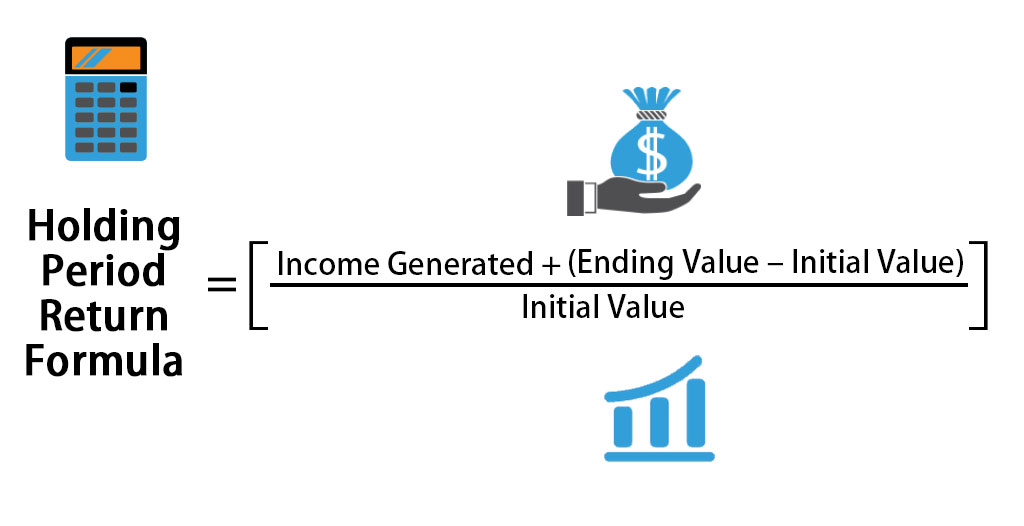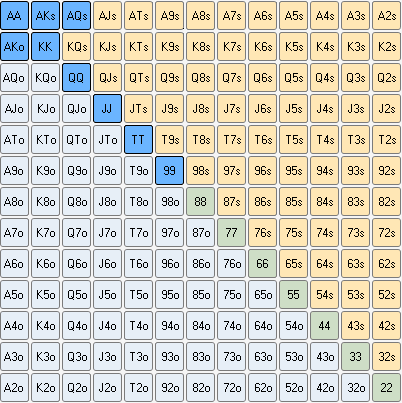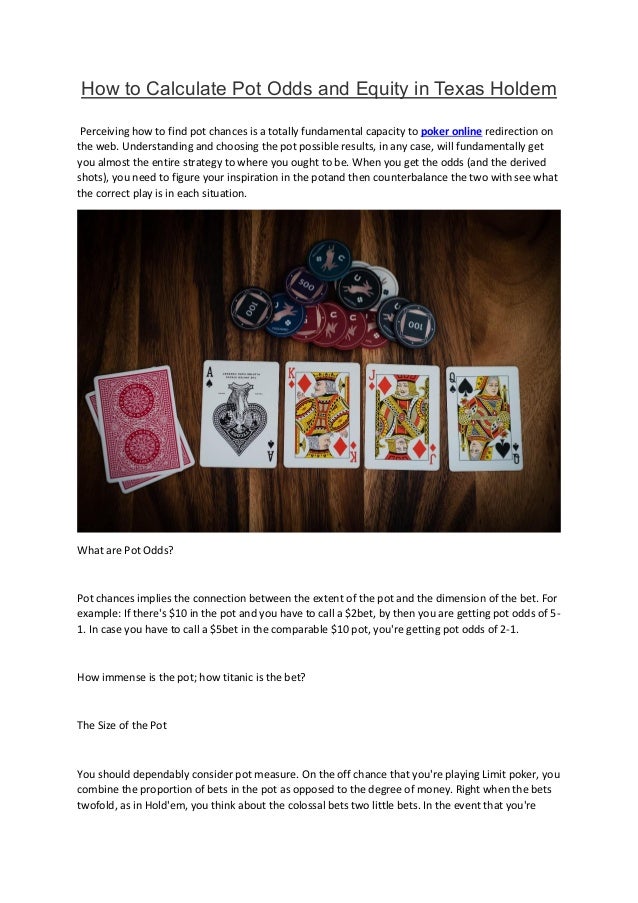Equity In Poker How To Calculate

What I really want to know is how is the procedure that pokerstove like software use to calculate the equity of one hand against another. Stack Exchange Network Stack Exchange network consists of 176 Q&A communities including Stack Overflow, the largest, most trusted online community for developers to learn, share their knowledge, and build. Check out for more poker tips, strategy articles and videos, and news. In this tutorial, we discuss how to calculate your pot equity. A poker hand range calculator is a great tool to help make smarter decisions when playing for real money. Get in-depth knowledge of calculating hand ranges, equity, and combinations to improve poker. A poker odds and equity calculator is a software program or app that instantly works out the chance of winning between different hands or ranges on any street. An example equity calculation made on the flop. Why Do I Need to Know Equities? Nearly every poker decision revolves around the equity. Step 1: Calculate the required equity. Your required equity is how often you will need to win the pot at showdown in order to make a call profitable. Required equity = price of calling / (pot size + price of calling) Price of calling: The difference between your last raise and the all-in. Pot size: All the money you can win. Your raises, your.
What is Equity?
Equity is best defined as the the share of the pot that you can expect to win in the long run, based on the strength of your hand versus that of your opponent, with cards still to come. If you get all in pre-flop with AA and your opponent holds KK and there’s $400 in the middle, a tool like Pokerstove will tell you that you’re an 82% shot to win the hand when the flop, turn and river are dealt. What that means is that you can expect to take $328 of the $400 in the long run, and so your equity in the pot is $328.
Poker Range Equity Calculator
However, the community cards can quickly change your equity in a hand. If a K comes down on the flop, your equity quickly drops to less than 10%. When you get to the river, your equity is always 100% when you’re ahead, 0% when you’re behind and 50% if you have the same holding as your opponent.
Why Calculate Equity?

Calculating your equity in a hand is a key skill in poker. Its imperative that you know your chance of winning the hand at showdown as the action progresses and to be able to compare this to both the pot odds and implied odds on offer, so you can make good, positive expected value decisions on every street in the hand. Bad or inexperienced players will often make decisions based on ‘feel’, or what hand they think their opponent might have. They give little consideration to the fact that their opponents could be making a certain move with a wide range of hands, and they also ignore the pot odds being offered to them. Playing poker in this manner is a sure way to go broke quickly and equity calculations are something you must do if you want to be a winning player.
How To Calculate Fold Equity In Poker

How to Calculate Equity
A simple, and very commonly encountered example of how to calculate equity would be when you have a flush draw on the flop and you think your opponent has top pair or an over-pair. Consider the following hand:

The game is $1/$2 6-max no limit holdem. Your opponent is a very straightforward player.
Stacks:
SB: $170
BB: $209
UTG: $425
HERO (MP): $200
CO: $200
BTN: $145
Preflop: Hero is MP with Js Ts
UTG raises to $6, Hero calls $6, 4 folds.
Flop: ($15) Ks 8s 3c (2 players)
UTG bets $15, Hero raises to $50, UTG goes all in ($144 to hero)
Pot size: $259
Imagine we know for certain that our opponent holds AK in this situation. We have to calculate our equity before we decide if the pot is laying us the correct price to make the call. Using an equity calculator such as PokerStove, we can deduce that versus AK we have 38% equity.
A quick way to make a rough calculation of your equity is to count the number of cards still in the deck which will give us the winning hand, in this case 9, and multiply it by 4 (or 2 if we are on the turn). Armed with this information about our equity we now decide if we are getting the right price to call. In this case we have to risk our remaining $144 to win $259 so we divide the bet we are facing by the total pot size including our bet [144/(144+259)] to deduce that we need just under 36% equity to make the call breakeven in the long run. As you can see, we have more equity than this so we should call.
Of course, in reality you’re never going to know exactly what your opponent’s holding is. The best you can hope for is to put him on a narrow range of hands and calculate your equity against that range. In the hand above for example, your opponent will be going all-in on the flop when you raise with more hands than just AK. His range for doing this also includes all of the possible sets: KK, 88 and 33 as well as the nut flush draw combinations in his under the gun range and AA.
It’s reasonable to assume that he raises suited aces down to about ATs under the gun if he is a straightforward player. We have the J and T however, so his only likely flush draw holding other than AK is AQ. Our equity versus this range of nut flush draws ,sets and AA is 33.5%. Earlier we said we need 36% equity to call and against this range we do not have the required equity and so should fold.
Clearly it’s difficult to make an exact equity calculation versus an opponent’s range at the table, but if you get into the habit of running such calculations when reviewing your play after a session, you’ll find that you can intuitively make a good estimate.